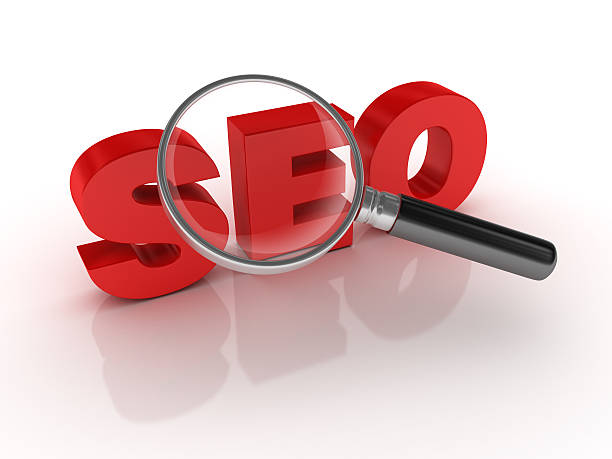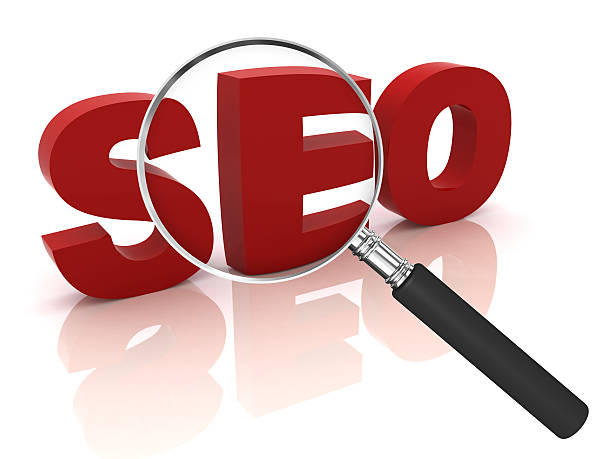Comprehensive Introduction to SEO and Its Importance in the Digital Age

In today’s world, where the internet has become an indispensable part of daily life, the visibility of your website amidst a deluge of information is of vital importance.
This is where the concept of “Search Engine Optimization” or SEO comes into play.
SEO is a set of techniques and strategies that helps improve a website’s ranking in organic (non-paid) search engine results like Google. This is a #complex and #multi-faceted process that includes technical, content, and link-building aspects.
The importance of this field stems from the fact that most users rely on search engines to find the information, products, or services they need.
If your website does not appear on the first pages of search results, you will likely lose a significant portion of your potential audience.
The main goal of SEO is to increase organic and high-quality traffic to the website.
This traffic often includes users who are actively looking for the content you provide, which greatly increases their chances of converting into customers or loyal readers.
Explanatory content about SEO principles can help clarify its various dimensions for newcomers.
In fact, SEO is not only a marketing tool but also a long-term investment for survival and growth in the digital marketing space.
A deep understanding of how search engines work and how to optimize your website for them is the first step towards online success.
SEO optimization is no longer an option but a necessity for any business or individual who wants to be seen in the online world.
Does your company’s website create a professional and lasting first impression on potential customers? Rasaweb, with its professional corporate website design, not only represents your brand’s credibility but also opens a path for your business growth.
✅ Create a powerful and trustworthy brand image
✅ Attract target customers and increase sales
⚡ Get free consultation
Main Pillars of On-Page, Off-Page, and Technical SEO

To comprehensively understand SEO and website optimization, it is necessary to familiarize ourselves with its three main pillars: On-Page SEO, Off-Page SEO, and Technical SEO.
Each of these sections plays a unique role in improving website rankings in search results, and together, they form a successful SEO strategy.
On-page SEO refers to all activities performed within your website and on its pages to achieve better rankings. This includes optimizing keywords, titles, meta descriptions, content, images, and URL structure.
The main goal of on-page SEO is to send clear and relevant signals to search engines about the topic and quality of your content.
An educational and specialized content in this field can include detailed guidelines for optimizing each of these elements. On the other hand, off-page SEO includes all activities performed outside your website to increase your domain authority and credibility.
The most important part of off-page SEO is Link Building; that is, acquiring high-quality backlinks from other websites.
These backlinks show search engines that your website is a reliable and trustworthy source.
Off-page SEO can also include activities such as social media marketing and participation in online forums.
Finally, Technical SEO focuses on optimizing your website’s technical infrastructure so that search engines can easily crawl and index it. This includes site loading speed, mobile responsiveness, URL structure, robots.txt file, XML sitemap, and the use of structured data (Schema Markup).
A website without a strong technical foundation cannot achieve high rankings, even with the best content and links.
Combining these three aspects allows your website to be comprehensively optimized for search engines and users, resulting in increased visibility and targeted traffic.
Keyword Research: The Beating Heart of SEO Strategy

In the world of SEO, keyword research is the first and perhaps most crucial step in designing any successful strategy.
Keywords are the phrases users enter into search engines to find the information, products, or services they are looking for.
Identifying the right keywords helps you create content that precisely addresses your audience’s needs. Without keyword research, your SEO efforts will be like shooting in the dark, as you might optimize for phrases that no one is searching for.
This process involves identifying keywords relevant to your business or topic, analyzing their search volume, examining the level of competition, and understanding the user’s search intent.
User intent can be informational (to find information), commercial (to research before buying), transactional (to make a purchase), or navigational (to find a specific website).
Using keyword research tools such as Google Keyword Planner, Ahrefs, Semrush, and Moz Keyword Explorer can be very helpful in this regard.
A strong keyword strategy not only helps you attract more traffic but also ensures that the attracted traffic is targeted and high-quality, likely to convert into customers.
This part of SEO requires a specialized and analytical approach to identify the best keywords based on business goals and competitive landscape.
The table below shows the types of keywords and their application in SEO strategy:
| Type of Keyword | Explanation | Example | Purpose in SEO |
|---|---|---|---|
| Short-tail (Short-term) | Short and general keywords with high search volume and high competition. | “Shoe” | Brand awareness, high traffic (but less targeted). |
| Long-tail (Long-term) | Longer and more specific keywords with lower search volume and less competition, but clearer user intent. | “Best running sports shoes” | Attracting targeted traffic with high conversion rates. |
| LSI Keywords | Synonymous and related keywords to the main keyword that help search engines better understand the content. | For “coffee”: “caffeine”, “coffee beans”, “coffee shop”. | Increasing content relevance, preventing keyword stuffing. |
On-Page SEO Optimization for Top Rankings

After thorough keyword research, the next step in the SEO strategy is to implement on-page SEO optimizations.
This part of SEO includes all actions you can directly take on your website pages to make them more attractive to search engines and users.
Key elements in on-page SEO include optimizing page titles (Title Tag), meta descriptions (Meta Description), using heading tags (H1-H6), content optimization, image optimization, and URL structure. Page titles and meta descriptions are the first things users see in search results and should be both attractive and contain main keywords to increase click-through rates (CTR).
Heading tags help search engines understand the structure and hierarchy of your content, while also improving readability for users.
Your content should be educational, in-depth, and high-quality, naturally incorporating target keywords rather than simply stuffing them.
Image optimization, by using appropriate Alt tags and compressing them for loading speed, is another important aspect.
Also, ensuring your URLs are short, descriptive, and include keywords helps with SEO.
On-page SEO is not just about search engines; it also significantly impacts user experience (UX). An optimized web page is not only understandable for search engine robots but also appealing and easy to navigate for visitors.
The better the user experience, the higher the likelihood of users staying on the site, interacting with the content, and returning, which sends positive signals to search engines.
Continuous optimization of these factors can significantly help improve your ranking in search results and attract targeted traffic.
Are you losing business opportunities due to an outdated or slow e-commerce website? Rasaweb’s expert team solves the problem of not attracting potential customers through your website forever!
✅ Attract more high-quality leads
✅ Increase customer trust and brand credibility
⚡ Get free e-commerce website design consultation now!
Link Building Structure and Off-Page SEO: The Path to Credibility

Alongside on-page and technical SEO, Off-Page SEO plays a crucial role in increasing your website’s domain authority and power.
The main pillar of off-page SEO is link building; the process of acquiring inbound links (backlinks) from other reputable websites to your site.
Search engines consider backlinks as a “vote of confidence” from other websites.
The greater the number and quality of your backlinks, the more trustworthy and authoritative search engines perceive your website to be, which significantly helps improve your ranking.
However, it’s not just the quantity of links that matters; the quality of links is far more important. A backlink from a relevant and highly authoritative website is much more valuable than dozens of links from low-quality or irrelevant sites.
There are various link-building strategies, including creating engaging and shareable content that naturally attracts links (also known as thought-provoking content), networking with bloggers and influencers, guest posting on other sites, participating in reputable forums and directories.
Avoiding spammy link-building techniques that are penalized by Google is crucial. The main goal in off-page SEO is to build a natural and strong link profile that not only helps with ranking but also increases referral traffic from other sites.
In fact, off-page SEO tells search engines that you are an authority in your field and deserve top rankings.
This is a time-consuming process that requires persistence and effort, but its results in improving your overall SEO position and online visibility are unparalleled.
A guided and targeted approach to link building is key to success in this part of SEO.
Technical SEO: The Foundation of a Powerful Website

Technical SEO is often referred to as the “foundation” of a successful SEO strategy.
This section involves behind-the-scenes optimizations of your website that help search engines crawl and index your site more effectively.
Although technical SEO may be less visible to users, it has a direct impact on your website’s ability to rank.
The most important aspects of technical SEO include site loading speed, mobile compatibility, URL structure and information architecture, SSL certificate usage, robots.txt file, XML sitemap, and structured data (Schema Markup). Site loading speed is one of Google’s important ranking factors and directly impacts user experience; slower sites have higher bounce rates.
Given that most searches today are performed via mobile devices, responsiveness and full mobile compatibility of the site are undeniable necessities. The robots.txt file and XML sitemap help search engines identify your important pages and ignore unnecessary ones, while structured data helps search engines better understand your content and display it in richer forms in search results (such as star ratings or event information).
Additionally, using HTTPS (with an SSL certificate) not only enhances your site’s security but is also a ranking factor.
A website with a strong technical infrastructure provides a solid foundation for all other SEO activities.
Without attention to these aspects, even the best content or strongest backlink profile cannot fully realize their potential in search results.
The technical aspect of SEO requires specialized knowledge and continuous updates to comply with the latest search engine standards.
Quality Content Creation: The Backbone of Sustainable SEO

In the world of SEO, content is king, and quality content creation is the backbone of any sustainable and successful SEO strategy.
Search engines are increasingly focused on providing the best and most relevant answers to user queries, which means your content must be rich, accurate, in-depth, and valuable.
Producing content that truly addresses user needs and exceeds their expectations not only helps you rank high in search results but also increases user engagement, reduces bounce rate, and increases dwell time on the site. All of these send positive signals to search engines.
Content types can include blog articles, comprehensive guides, infographics, videos, podcasts, and even entertaining content, provided it is engaging and useful for your target audience.
The importance of fresh and updated content is also very high; search engines prefer content that is regularly updated.
A strong content strategy includes careful planning, keyword research, high-quality writing, and promoting content across various channels.
Your content should not only be optimized for search engines but also written in a way that humans will read and benefit from.
Providing analytical and data-driven content can also enhance your credibility and establish you as an authority in your field.
This approach ensures that your site always has new and relevant content for users, which itself helps in continuously improving your SEO ranking.
The table below outlines the types of content and their role in an SEO strategy:
| Type of Content | Role in SEO | Main Goal |
|---|---|---|
| Blog Articles | Covering long-tail keywords, attracting organic traffic, providing educational information. | Awareness and user acquisition in early sales funnel stages. |
| Comprehensive & In-depth Guides | Building authority and credibility, ranking for difficult keywords, attracting backlinks. | Positioning as an expert, increasing dwell time. |
| Infographics & Videos | Increasing engagement, attracting social shares, providing visual content. | Reducing bounce rate, increasing engagement rate. |
| FAQ Content (Frequently Asked Questions) | Answering common user questions, improving visibility in voice search and Google features. | Increasing discoverability and improving user experience. |
Measuring and Analyzing SEO Performance: A Tool for Continuous Improvement

After implementing SEO strategies, the next crucial step is measuring and analyzing their performance.
SEO is not a static process; rather, it requires continuous monitoring and optimization based on data and analyses. Without accurate measurement, you cannot evaluate the effectiveness of your efforts and identify the strengths and weaknesses of your strategy.
Tools like Google Analytics and Google Search Console are among the most essential and powerful tools in this area, providing valuable information about site traffic, keywords, traffic sources, user behavior, technical issues, and page indexing status.
Google Analytics allows you to analyze incoming traffic, bounce rate, user dwell time, top-performing pages, and user navigation paths on the site. This data helps you understand which content performs better and which sections need improvement.
On the other hand, Google Search Console provides a direct view of how Google interacts with your website; information such as search performance (clicks, impressions, CTR, and keyword positions), index coverage, mobile issues, and inbound and outbound links.
Analyzing this data allows you to make informed decisions to improve your SEO strategy. For example, if you find that a particular keyword attracts a lot of traffic but has a low conversion rate, you can optimize the relevant content to better match user intent.
This analytical process is key to continuous improvement and maintaining competitiveness in the online space.
By intelligently using these tools, you can continuously optimize your SEO performance and achieve your digital marketing goals.
Are you bothered by losing customers due to your e-commerce site’s outdated appearance or slow speed? Rasaweb’s expert team, with professional e-commerce website design, solves these problems!
✅ Increase customer trust and your brand’s credibility
✅ Stunning speed and excellent user experience
Get a free consultation with Rasaweb now ⚡
The Future of SEO: Artificial Intelligence and Voice Search

The world of SEO is constantly evolving, and for long-term success, predicting and adapting to new trends is essential.
Two of the most important changes shaping the future of SEO are the increasing role of Artificial Intelligence (AI) in search engine algorithms and the significant growth of voice search.
Artificial intelligence, especially algorithms like Google’s RankBrain and BERT, helps search engines better understand user intent and provide more relevant content, even if keywords don’t precisely match. This means that simply stuffing content with keywords is no longer enough; you need to produce truly valuable, comprehensive, and high-quality content that fully answers user questions.
SEO for AI means focusing on delivering content that can understand the complexities and nuances of natural language.
On the other hand, voice search has become a dominant trend with the proliferation of voice assistants like Siri, Alexa, and Google Assistant.
The main difference in voice search is its conversational and interrogative nature; users often ask full and longer questions. To optimize for voice search, one should focus on long-tail and more natural keywords, using questions and answers in content, and optimizing for direct answer content (Featured Snippets).
Informative content that answers common questions is very suitable for voice search.
Additionally, the E-A-T principles (Expertise, Authoritativeness, Trustworthiness), which are strongly emphasized by Google, will play an even more prominent role in the future of SEO.
Websites must prove that they are a trustworthy and authoritative source in their field.
Ultimately, SEO will increasingly revolve around user experience (UX) and delivering the best content to humans, not just techniques to trick search engines.
Persistence in SEO and Long-term Success in the Online Space

As discussed throughout this educational and analytical article, SEO is a continuous and ongoing process, not a one-time project.
Long-term success in the online space heavily depends on your commitment to persistence in SEO activities.
Search engine algorithms are constantly changing and evolving, competitors are not idle, and user behavior also changes. Therefore, what works today may not be effective tomorrow.
To maintain and improve your rankings, it is necessary to regularly monitor and update your website from on-page, off-page, and technical SEO perspectives.
This includes analyzing keyword performance, checking for new and lost inbound links, fixing technical errors, updating old content, and publishing fresh content.
Keeping up with new trends in the SEO industry, such as changes in Google’s algorithms, the emergence of new technologies like voice search and artificial intelligence, and changes in consumer behavior, is of great importance.
Adapting quickly to these changes helps you always stay one step ahead of the competition.
SEO is a long-term investment whose results may not appear immediately, but its rewards in the form of sustainable organic traffic, increased brand awareness, and ultimately business growth, are invaluable.
SEO specialist teams or responsible individuals in this field must have an analytical, up-to-date, and adaptable mindset.
Remember that every effort you make to improve SEO adds a brick to your online success wall.
Persistence in this path ensures your strong and stable presence in search results and the achievement of your business goals.
Frequently Asked Questions
| Question | Answer |
|---|---|
| What is SEO? | SEO, or Search Engine Optimization, is the process of increasing the quality and quantity of website traffic by improving the site’s ranking in natural (organic) search engine results like Google. |
| What are the main types of SEO? | SEO is divided into three main categories: On-Page SEO, Off-Page SEO, and Technical SEO. |
| What does On-Page SEO include? | On-Page SEO includes optimizing elements within the website, such as keywords, page title (Title Tag), meta description (Meta Description), content, URL structure, images, and internal links. |
| What is Off-Page SEO? | Off-Page SEO refers to activities outside the website that help improve its ranking, such as backlink building, social media marketing, and brand mentions. |
| What is Technical SEO? | Technical SEO involves optimizing the technical aspects of a website to help search engines crawl and index it better. This includes site speed, mobile-friendliness, site structure, sitemaps, and Robots.txt file. |
| What role do Keywords play in SEO? | Keywords are phrases that users enter into search engines. Proper and targeted use of relevant keywords in content and site elements helps search engines understand the topic of your page and display it for relevant searches. |
| What is a Backlink and why is it important? | A backlink, or inbound link, is a link from one website to another. Backlinks act as a “vote of confidence” from other sites for search engines and play a significant role in a site’s authority and ranking improvement, especially if they come from reputable sites. |
| What impact does quality content have on SEO? | Quality, relevant, comprehensive, and unique content not only attracts and retains users but also shows search engines that your page is valuable. This helps improve ranking, reduce bounce rate, and increase user dwell time on the site. |
| Why is site loading speed important for SEO? | Site loading speed is an important ranking factor for Google. Faster sites provide a better user experience, have lower bounce rates, and are preferred by search engines. |
| Is SEO a one-time process? | No, SEO is a continuous and long-term process. Search engine algorithms are constantly changing, competition is increasing, and site content also needs updating. Therefore, SEO requires continuous monitoring, analysis, and optimization. |
And other advertising agency services by Rasaweb in the field of advertising
Smart Direct Marketing: An effective tool for customer acquisition through attractive UI design.
Smart UI/UX: A novel service to increase user engagement through SEO-driven content strategy.
Smart Digital Branding: A specialized service for growing customer acquisition based on real data usage.
Smart Link Building: A creative platform to improve customer acquisition by optimizing key pages.
Smart Direct Marketing: A professional solution for improving SEO ranking with a focus on attractive UI design.
And over hundreds of other services in the field of internet advertising, advertising consultation, and organizational solutions
Internet Advertising | Advertising Strategy | Advertorial
Sources
SEO Training
SEO Articles
Complete SEO Training
What is SEO?
? For significant growth of your business in the digital world, Rasaweb offers you comprehensive digital marketing solutions. With our professional services, from WordPress website design to SEO and social media management, experience a powerful and impactful presence.
📍 Tehran, Mirdamad Street, next to Bank Markazi, Kazerun Jonoubi Alley, Ramin Alley, No. 6




